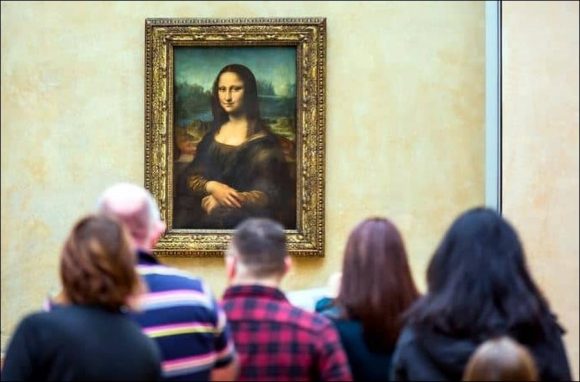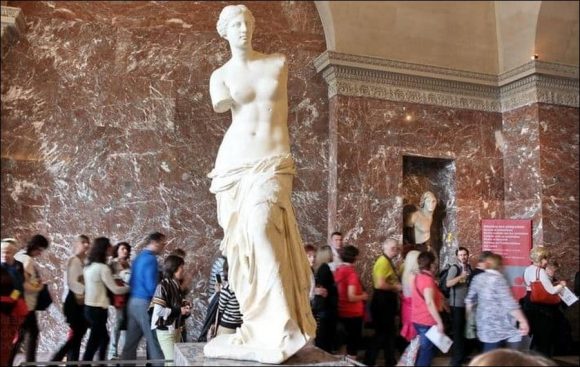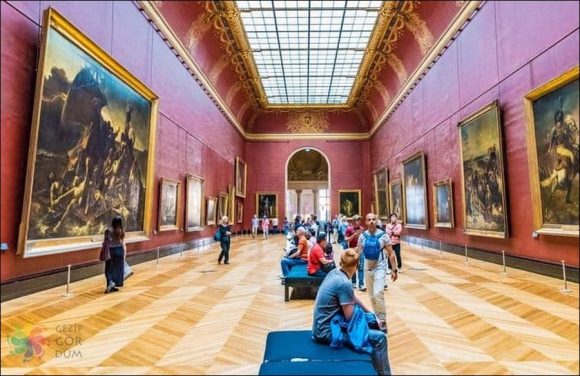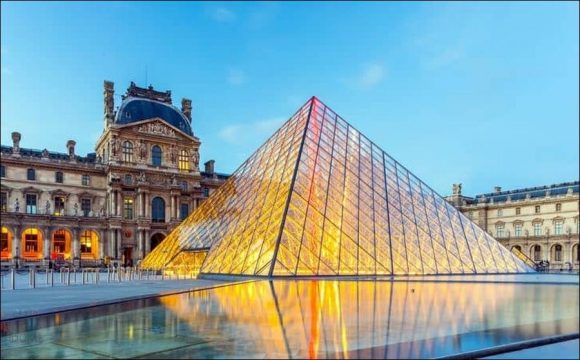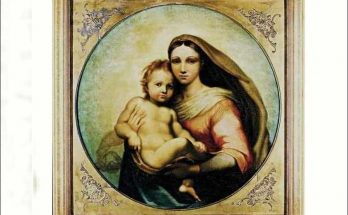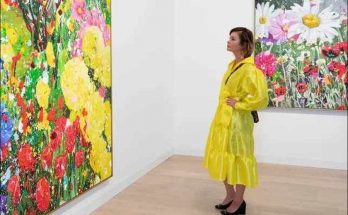The Louvre Museum contains of a wide variety of sections. Western Europe, Eastern Europe, Egypt and other Islamic works; They are classified as paintings, sculptures and decorative works and displayed in different galleries. In addition, Pavillon De L’Horloge, where you can get information about the history of the museum, has different sections such as the royal gardens and the glass pyramid in front of the museum.
If you want to talk about all of these sections, especially the galleries where collections are exhibited.
Louvre Museum Painting Collection
The paintings, which constituted the largest part of the collection at the opening of the museum in 1793, are still among the most impressive works in the World’s Largest Museum.
The collection first started with the works of masters such as Michelangelo, Raphael, Leonardo De Vinci, Rosso, Primaticcio by King I. François and grew rapidly between the 13th and 19th centuries.
Today, the most valuable pieces of the collection, consisting of works by leading artists of the world, especially Italian, French, Spanish painters, including Mona Lisa, Saint Jean Baptiste, Madame Récamier, are exhibited in the Louvre Museum Painting Collection.
Louvre Museum Sculpture Collection
In fact, when the museum was opened in 1793, there were a rare number of sculptures in its collection. In addition to the works of masters such as Michelangelo, Raphael, Carracci, many valuable works were added to the Louvre Museum sculpture collection in time and even after the French Revolution, and the modern sculptures section was opened to visitors in 1824.
Today, the most valuable works, especially Michelangelo’s Slaves, are exhibited in the collection owned by the museum.
Louvre Museum Decorative Arts Collection
The collection, which includes a wide range of decorative materials made with different materials such as jewelry, silver, ivory and bronze from the Middle Ages to the 19th century, is extremely impressive.
Among the works that shed light on the daily life and social values of the period they belonged to, there are works such as antique vases, trinkets, consoles and crowns of precious stones. Decorative Arts Collection, where the most valuable works of Gothic, Renaissance and Medieval times are exhibited to visitors, is one of the important parts of the World’s Largest Museum, Louvre.
Louvre Museum Printing and Drawing Collection
In fact, I might not be able to express this rich collection enough by saying Print and Drawing. The collection, which contains handwritten books, draft drawings, miniatures, prints and engravings, is also one of the most gently protected collections due to its works being sensitive to light and temperature. The most valuable works in the wide collection are exhibited to the visitors.
Louvre Museum Ancient Egypt Collection
From 4000 BC to A.D. I can say that the collection, which includes Egyptian artworks such as paintings and sculptures in the Nile Delta, dating back to the 4th century, includes mummies, sphinxes and decorative objects belonging to Egyptian Culture.
Let’s never get into the subject of how these works went to France. In fact, this section was not available when the museum was first opened. In 1824, with the addition of nearly 9 thousand works to the Louvre Museum collection, the Ancient Egypt Collection became one of the permanent sections of the museum and the number of works increased over time.
Louvre Museum Greek, Etruscan and Roman Collection
When the Louvre Museum was first opened, only the collection of paintings and sculptures was available. Other collections, including Greek, Etruscan and Roman Artifacts, were added to the museum inventory.
From the Neolithic Age M.S. The most valuable pieces of the Greek, Etruscan and Roman Collection, which include sculptures such as Apollo, Artemis, Aphrodite, and decorative objects made on the coast of Greece, Italy and the entire Mediterranean on the 4th century, are exhibited to the visitors.
Louvre Museum Ancient Near East Collection
The Near East Collection, which includes the most precious works of the pre-Islamic period, belonging to North Africa and Central Asia Geography, represents a period of 9 thousand years. The section where you can see the extraordinary works of this rich collection is undoubtedly one of the most interesting places in the World’s Largest Museum.
Louvre Museum Islamic Art Collection
One of the newest sections in the Louvre Museum, the Islamic Works Collection, opened in 2012. In fact, I can say that the section covering a period of 1300 years, belonging to a geography extending from Spain to Southeast Asia, is the most different place from the others in the World’s Largest Museum. Miniatures, sculptures and stone inscriptions are among the pieces in the section, where over 3,000 works are exhibited.
Pavillon De L’Horloge
Located between Napoleon Hall and Carrée Hall, Pavillion De H ‘Horloge was opened in 2016 and its mission is to give visitors detailed information about the history of the museum.
The story of the building, which was originally built as a castle, first became a Royal Palace and then a museum, the answer to everything you might want to know about the Kings of France living here, why the building is a museum, the works in the collection and the museum is boring at all. given.
Louvre Museum Glass Pyramid
Chinese Architect I.M. Another interesting work in the Louvre Museum, the 21-meter-high glass pyramid, built by Pei in 1989. In fact, this pyramid, which is frequently seen in pictures, documentaries and movies, is not the only one, but the largest of the 4 glass pyramids around the Louvre.
Although the Louvre Museum, which is devoted to historical and ancient artifacts, and the fact that this modern building is unrelated is worthwhile, it is worth seeing as the glass pyramid represents an elegant combination of old and modern over time.
Louvre Museum Gardens
The World’s Largest Museum offers visitors a unique experience not only with its indoor spaces but also with its open spaces. Of course, all of the 30 hectares of gardens are not open to visitors, but the open ones are enough to satisfy you. Both open spaces, consisting of two main gardens, The Tuileries and Carousel, are open to visitors.
You can see 20 sculptures made by Aristide Maillol in Carousel Gardens, and over 200 sculptures and historical artifacts made between 17th and 20th centuries in The Tuileries.
Of course, in the lush and peaceful atmosphere of these gardens. Stretching between the Louvre Museum and Place de la Concorde along the Seine River, these gardens are under UNESCO protection and attract over 10 million tourists annually.
Visits: 212
